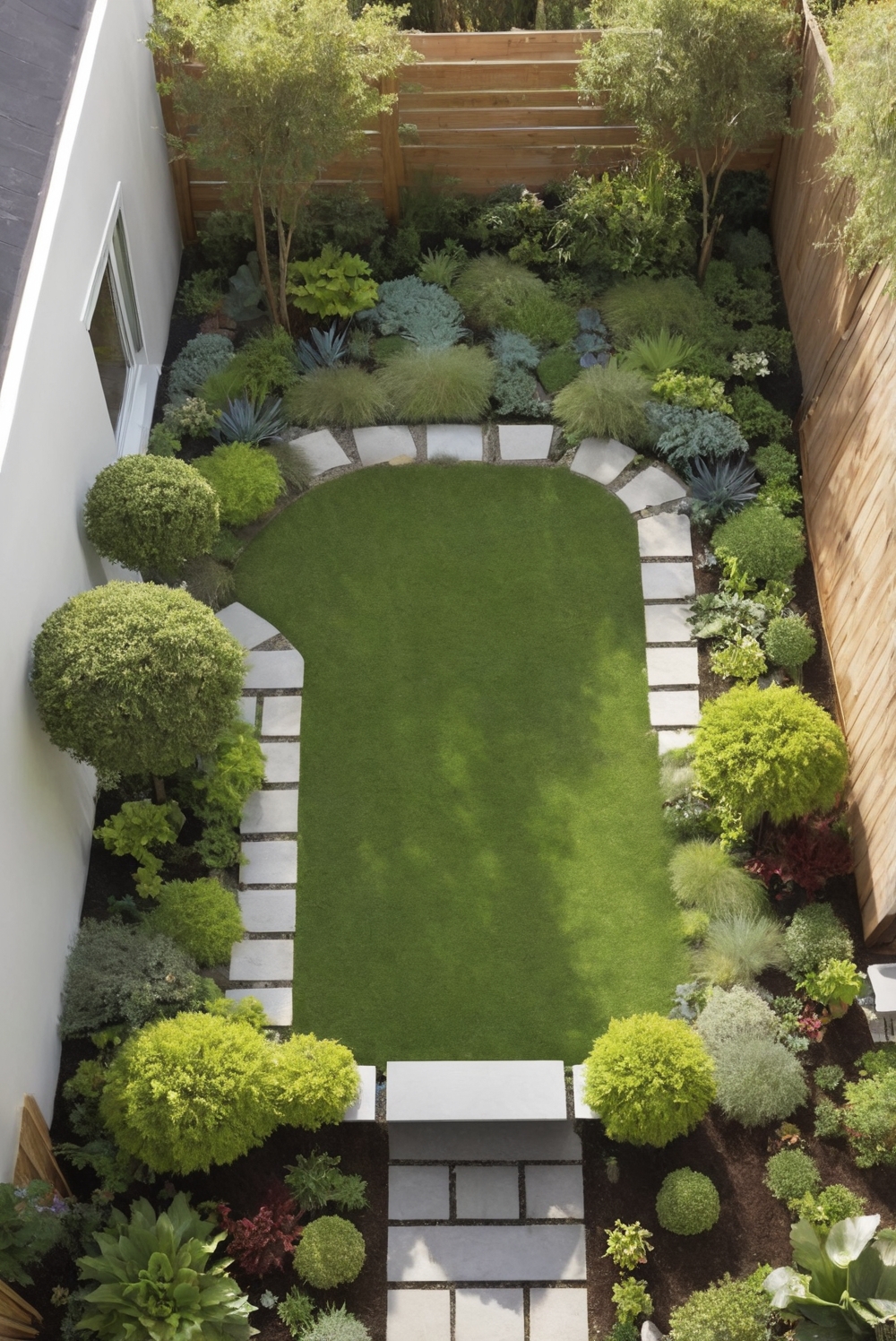Discover the most innovative layouts with interior designer tips for small garden designs. Enhance your outdoor space with creativity and efficiency in mind.
Some creative and efficient small garden layout designs include vertical gardening, raised beds, container gardening, and a mix of flowers and edible plants. Vertical gardening maximizes space by growing plants upward on walls or trellises. Raised beds provide good soil drainage and make tending to plants easier. Container gardening allows for flexibility and can be moved to different locations based on sunlight requirements. Mixing flowers and edible plants not only adds visual interest but also attracts beneficial insects to the garden. Consider incorporating a water feature for a soothing element. When decorating your home, it’s important to consider space planning and interior design. Choose colors that match your furniture and walls for a cohesive look. Prioritize functionality and comfort in every room, including the bedroom, kitchen, and living room. Wall paint plays a crucial role in home decor, so invest in high-quality primer and choose colors that complement each other.
What are some creative and efficient small garden layout designs?
When planning a small garden layout, it is important to consider various factors to make the most of the space you have. Here are some creative and efficient small garden layout designs to help you get started:
Utilize Vertical Space:
One key strategy for small garden layouts is to make use of vertical space. Consider installing trellises, hanging planters, or vertical gardens to maximize space efficiency. This not only adds visual interest but also allows you to grow more plants in a limited area.
Plan for Multi-Functional Areas:
In a small garden, it is essential to create multi-functional areas that serve multiple purposes. For example, a seating area with built-in storage or a dining table that can also be used as a workspace. This way, you can make the most of every square foot of your garden.
Choose the Right Plants:
Selecting the right plants is crucial for a small garden layout. Opt for compact varieties, dwarf fruit trees, and plants that serve more than one function, such as herbs that can be used for cooking and decoration. This not only saves space but also creates a diverse and visually appealing garden.
Consider Container Gardening:
Container gardening is a great way to add flexibility to your small garden layout. Use containers of different sizes and shapes to create a dynamic and versatile space. You can easily move containers around to change the layout or bring plants indoors during harsh weather conditions.
Include Pathways and Borders:
Pathways and borders can help define different areas of your small garden layout and create a sense of structure. Use materials like gravel, stepping stones, or low hedges to delineate flower beds, seating areas, and vegetable patches. This not only adds visual interest but also makes navigation easier.
In conclusion, designing a small garden layout requires careful planning and creativity. By utilizing vertical space, incorporating multi-functional areas, choosing the right plants, considering container gardening, and including pathways and borders, you can create a beautiful and efficient garden that maximizes every inch of space available. Remember to tailor the design to your preferences and needs, and don’t be afraid to experiment with different layouts until you find the perfect one for your small garden.

